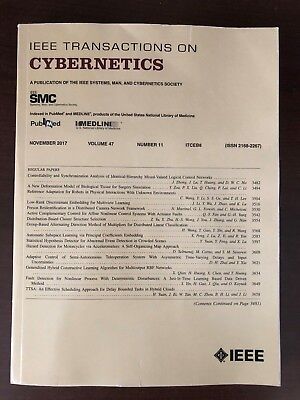Efficient Local Coherent Structure Learning via Self-Evolution Bipartite Graph
IF 9.4
1区 计算机科学
Q1 AUTOMATION & CONTROL SYSTEMS
引用次数: 0
Abstract
Dimensionality reduction (DR) targets to learn low-dimensional representations for improving discriminability of data, which is essential for many downstream machine learning tasks, such as image classification, information clustering, etc. Non-Gaussian issue as a long-standing challenge brings many obstacles to the applications of DR methods that established on Gaussian assumption. The mainstream way to address above issue is to explore the local structure of data via graph learning technique, the methods based on which however suffer from a common weakness, that is, exploring locality through pairwise points causes the optimal graph and subspace are difficult to be found, degrades the performance of downstream tasks, and also increases the computation complexity. In this article, we first propose a novel self-evolution bipartite graph (SEBG) that uses anchor points as the landmark of subclasses, and learns anchor-based rather than pairwise relationships for improving the efficiency of locality exploration. In addition, we develop an efficient local coherent structure learning (ELCS) algorithm based on SEBG, which possesses the ability of updating the edges of graph in learned subspace automatically. Finally, we also provide a multivariable iterative optimization algorithm to solve proposed problem with strict theoretical proofs. Extensive experiments have verified the superiorities of the proposed method compared to related SOTA methods in terms of performance and efficiency on several real-world benchmarks and large-scale image datasets with deep features.基于自进化二分图的高效局部相干结构学习。
降维(DR)的目标是学习低维表示,以提高数据的可分辨性,这对于许多下游的机器学习任务至关重要,如图像分类、信息聚类等。非高斯问题作为一个长期存在的挑战,给基于高斯假设的DR方法的应用带来了许多障碍。解决上述问题的主流方法是通过图学习技术来探索数据的局部结构,但基于图学习技术的方法存在一个共同的弱点,即通过成对点来探索局部性导致难以找到最优图和子空间,降低了下游任务的性能,也增加了计算复杂度。在本文中,我们首先提出了一种新的自进化二分图(SEBG),该图使用锚点作为子类的标志,并学习基于锚点而非成对关系,以提高局部探索的效率。此外,我们还开发了一种基于SEBG的高效局部相干结构学习算法,该算法具有自动更新学习子空间中图的边的能力。最后,我们还提供了一个多变量迭代优化算法来解决所提出的问题,并提供了严格的理论证明。在几个真实世界的基准和具有深度特征的大规模图像数据集上,大量实验验证了与相关SOTA方法相比,所提出的方法在性能和效率方面的优势。
本文章由计算机程序翻译,如有差异,请以英文原文为准。
求助全文
约1分钟内获得全文
求助全文
来源期刊

IEEE Transactions on Cybernetics
COMPUTER SCIENCE, ARTIFICIAL INTELLIGENCE-COMPUTER SCIENCE, CYBERNETICS
CiteScore
25.40
自引率
11.00%
发文量
1869
期刊介绍:
The scope of the IEEE Transactions on Cybernetics includes computational approaches to the field of cybernetics. Specifically, the transactions welcomes papers on communication and control across machines or machine, human, and organizations. The scope includes such areas as computational intelligence, computer vision, neural networks, genetic algorithms, machine learning, fuzzy systems, cognitive systems, decision making, and robotics, to the extent that they contribute to the theme of cybernetics or demonstrate an application of cybernetics principles.
 求助内容:
求助内容: 应助结果提醒方式:
应助结果提醒方式:


